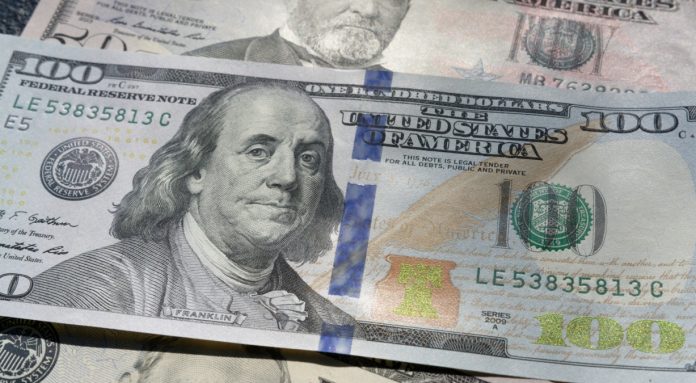The pound closed 0.2% higher versus the dollar on Monday and has continued climbing slowly higher in early trade this morning. The pound US dollar exchange rate hit a peak of US$1.2646 in the previous session.
| What do these figures mean? |
|---|
| When measuring the value of a pair of currencies, one set equals 1 unit and the other shows the current equivalent. As the market moves, the amount will vary from minute to minute.For example, it could be written:1 GBP = 1.28934 USD Here, £1 is equivalent to approximately $1.29. This specifically measures the pound’s worth against the dollar. If the US dollar amount increases in this pairing, it’s positive for the pound. Or, if you were looking at it the other way around:1 USD = 0.77786 GBP In this example, $1 is equivalent to approximately £0.78. This measures the US dollar’s worth versus the British pound. If the sterling number gets larger, it’s good news for the dollar. |
Brexit developments continue to be the key driver for the pound. UK Prime Minister Theresa May faced a hostile Parliament on Monday after returning from the EU Leaders Summit with nothing new to offer ministers. Theresa May has agreed to hold the meaningful vote in Parliament in the week beginning January 14th. The confirmation of a date is offering some support to the pound.
Leader of the opposition Jeremy Corbyn tabled a motion of no confidence in the Prime Minister but not in the government as a whole. Despite frustration on both sides surrounding Theresa May’s handling of Brexit, Jeremy Corbyn stopped short of taking action to topple the Prime Minister. A vote of no confidence against the entire government is needed to achieve that. This is something he is unlikely to do until he is sure that he can win. This leaves Brexit in deadlock and the pound moving higher as the immediate risk of a general election has pushed back.
| How does political risk have impact on a currency? |
|---|
| Political risk drags on the confidence of consumers and businesses alike, which means both corporations and regular households are then less inclined to spend money. The drop in spending, in turn, slows the economy. Foreign investors prefer to invest their money in politically stable countries as well as those with strong economies. Signs that a country is politically or economically less stable will result in foreign investors pulling their money out of the country. This means selling out of the local currency, which then increases its supply and, in turn, devalues the money. |
All Eyes on Wednesday Fed Announcement
The dollar was under pressure on Monday and this has continued into Tuesday as investors count down to the Federal Reserve monetary policy announcement on Wednesday.
As global equities sold off on Monday and again in Asia overnight, investors are growing increasingly concerned over a slowing of the global economy. A slowing global and US economy could make the Fed press pause on its hiking cycle. Whilst analysts are expecting the Fed to hike rates on Wednesday, the expectation is that they will slow the hikes down considerably or even stop them altogether in 2019.
| Why do raised interest rates boost a currency’s value? |
|---|
| Interest rates are key to understanding exchange rate movements. Those who have large sums of money to invest want the highest return on their investments. Higher interest rate environments tend to offer higher yields. So, if the interest rate or at least the interest rate expectation of a country is relatively higher compared to another, then it attracts more foreign capital investment. Large corporations and investors need local currency to invest. More local currency used then boosts the demand of that currency, pushing the value higher. |
So far the Fed’s diagram for it’s path of hiking (the dot plot) points to 3 rate hikes in 2019. Investors are expecting only one hike according to the fedwatch fund. This difference exists because investors see that higher interest rates and therefore higher borrowing costs would dampen US economic growth, forcing the Fed to pause or halt the hikes.
This publication is provided for general information purposes only and is not intended to cover every aspect of the topics with which it deals. It is not intended to amount to advice on which you should rely. You must obtain professional or specialist advice before taking, or refraining from, any action on the basis of the content in this publication. The information in this publication does not constitute legal, tax or other professional advice from TransferWise Inc., Currency Live or its affiliates. Prior results do not guarantee a similar outcome. We make no representations, warranties or guarantees, whether express or implied, that the content in the publication is accurate, complete or up to date. Consult our risk warning page for more details.
This article was initially published on TransferWise.com from the same author. The content at Currency Live is the sole opinion of the authors and in no way reflects the views of TransferWise Inc.





